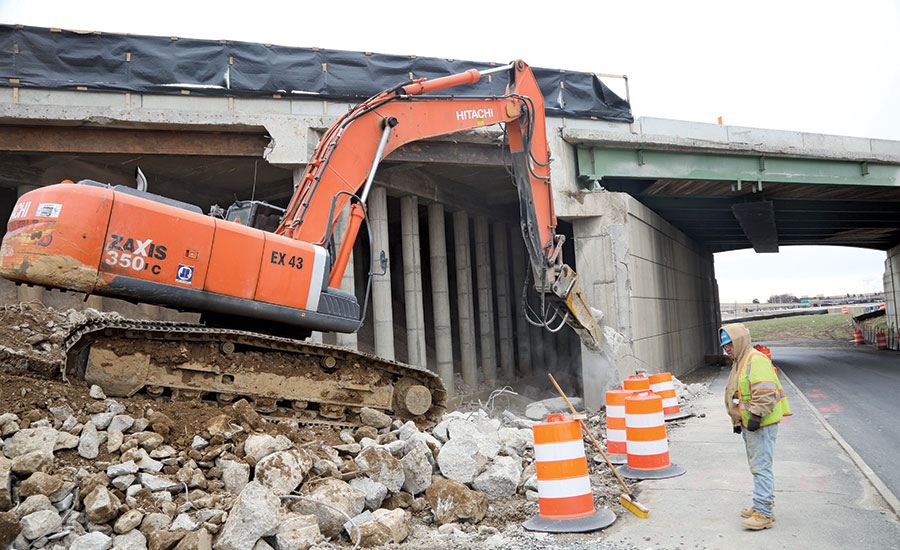On the heels of the new surface transportation law’s $2-billion boost this year for highway construction, the Federal Highway Administration has followed up with more good news for state transportation agencies and firms that design and build roads and bridges. FHWA on March 8 spelled out the details for redistributing to states about $2 billion—and maybe more—that Congress had set aside more than a decade ago for highway and bridge projects but is still unspent.
Credit for the $2-billion infusion goes to congressional appropriators. In the fiscal 2016 omnibus spending package, enacted on Dec. 18, they mandated the funding shift for the so-called orphan earmarks and said the money had to be parceled out to states by Sept. 30, the end of the current fiscal year.
FHWA’s long-awaited announcement comes about three months after the Dec. 4 signing of the Fixing America’s Surface Transportation (FAST) Act, which increased the 2016 federal-aid highway obligation ceiling by $2 billion, or 5%, from the 2015 level.
The earmark funding “is really a shot in the arm for the construction industry for the 2016 construction season,” says Jay Hansen, National Asphalt Pavement Association executive vice president. “On top of the FAST Act, this is icing on the cake.”
The appropriations measure says that, to be eligible for the funding shift, earmarked projects must have been authorized or had funds appropriated before Sept. 30, 2005. The old projects also had to have less than 10% of their funds obligated or spent as of Dec. 18, 2015.
FHWA’s lists of potentially eligible old earmarks that meet the under-10% obligation requirement total $1.94 billion.
The total could rise further. Also available for repurposing is unspent money for projects that have more than 10% of their funding obligated and are completed, according to FHWA. Hansen points out that, according to FHWA’s data, the completed- projects surplus is $3.3 billion on top of the $1.94 billion. But it’s unclear how much of the $3.3 billion will end up being reused.
The idea of unlocking money from inactive earmarks isn’t new. The U.S. Dept. of Transportation took a similar step in August 2012, when it made more than $470 million from unused earmarks available to states for other projects. But the 2016 pie is more than quadruple the earlier one’s size.
The impact varies from state to state, however. Just counting projects with less than 10% funding obligated, an American Association of State Highway and Transportation Officials tabulation shows that New York state has the largest amount of potential repurposed funds, with $207.6 million. Georgia ranks second, with $166 million, followed by California, with $148.7 million; New Jersey, with $116.8 million; and Pennsylvania, with $101.3 million.
The next five states—Massachusetts, Alabama, Connecticut, Illinois and Virginia—are in line for a combined $415.4 million. The top 10 states account for 59% of the $1.94 billion available.
North Dakota and Wyoming, on the other hand, have no eligible orphan earmarks in the under-10% category.
Dave Bauer, American Road and Transportation Builders Association senior vice president of government relations, said in a statement, “While additional construction activity will certainly result … those states able to take advantage of this new flexibility were shortchanged 10 years ago by the designation of funds to projects that could or would not move forward.”
Bauer called the new program “a positive step.” But he added that “what the country really needs is a permanent Highway Trust Fund revenue solution that supports increased highway and transit investment for all states.” The appropriations statute attaches another condition to the money, specifying that funds must be reused on other projects located within 50 miles of the original earmarked project.
FHWA’s March 8 guidance document says states must submit requests by Aug. 29, identifying projects on which they want to redeploy funds. If FHWA gives its sign-off, states then have until the end of fiscal 2019 to obligate that money.
Lloyd Brown, an American Association of State Highway and Transportation Officials spokesman, said via email, “There is significant need throughout the states, so we are confident these funds will be put to use as quickly as possible.”
Hansen says he expects to see the redistributed orphan-earmark funds result in state highway agencies’ bid lettings, beginning in the third and fourth quarters of 2016.
Steve Hall, American Council of Engineering Companies vice president for government affairs, would like to see the program implemented rapidly. “Let’s get these dollars out the door and supporting active projects,” Hall says. “Obviously, the system can certainly use a lot more, but this is a welcome addition.”




Post a comment to this article
Report Abusive Comment